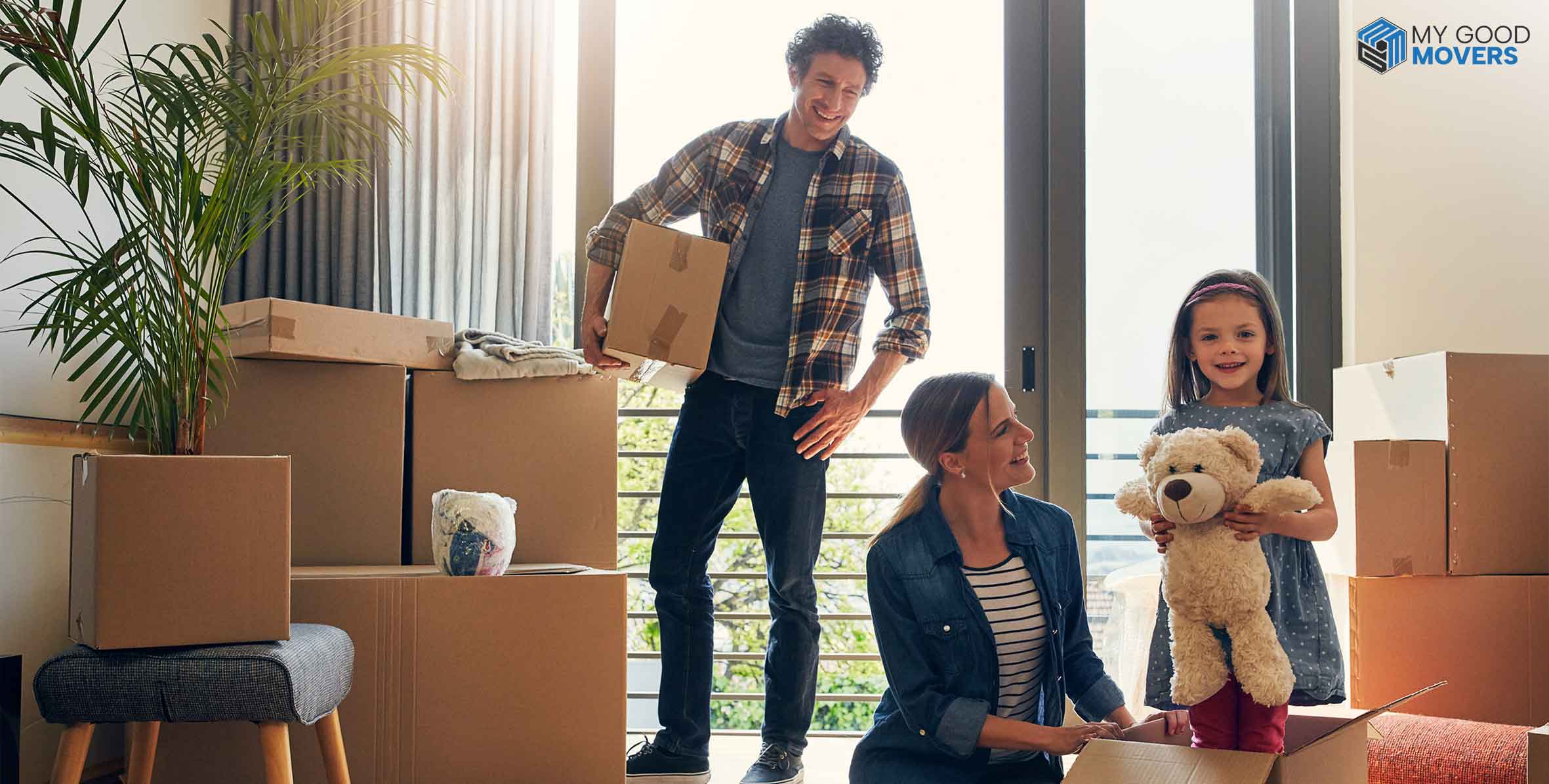Change is the only constant in life.
Moving your family from a house to an apartment can feel particularly monumental.
You might find yourself questioning, “Is this the right move for my family?”
Well, you’re not alone. According to recent data, more than 27 million Americans moved in the previous year alone, with many families looking for smaller, more affordable spaces like apartments.
As housing markets continue to fluctuate, many families are discovering that moving to an apartment can offer a practical solution.
The appeal lies in lower costs, simplified maintenance, and access to urban conveniences.
For instance, over 41% of Americans cited housing-related reasons as their primary motivation for relocation.
This makes sense when you consider that the cost of maintaining a home—between utilities, taxes, and repairs—often outweighs the expenses of apartment living.
It could also save you up to 20-30% in monthly expenses.
If you are standing at the crossroads of moving decisions, let’s look into the advantages and challenges of transitioning from a house to an apartment.
Why Make the Move from a House to an Apartment?
There are many reasons families choose to downsize. Some of the most common include:
Curious about your moving costs? Fill out the details, and we’ll calculate them for you.

Lower Costs
Moving from a house to an apartment can significantly reduce your monthly expenses.
According to moving statistics, moving into a smaller space could lower housing costs by 20-30%, depending on your city.
Simplicity
The upkeep of a house can become quite stressful, especially if your family has grown smaller or your needs have changed.
Moving to an apartment may reduce the need for maintenance and also save time and energy.
Location and Convenience
Many families move to be closer to work, schools, or urban amenities.
According to a recent survey, 24.3% of Americans moved within the same state to be closer to jobs.
Moving from a House to an Apartment: How to Make It Work
The transition from house to apartment involves more than just changing your address.
Here are some key strategies to make this process easier for your family:
Evaluate Your Space Needs
One of the first things to consider is the amount of space your family truly needs.
Many houses come with extra rooms that serve little purpose, but apartments can be more streamlined.
On average, families moving from a house go for 2-3 bedroom apartments.
For instance, about 28% of recent moves were to one-bedroom homes, while 20% went to three-bedroom units.
Pro Tip: Create an inventory of the items you truly use and enjoy. This helps you declutter and fit your essentials into your new, smaller home.
Downsize Strategically
Downsizing from a house to an apartment can feel liberating but requires a thoughtful approach.
You will need to decide what furniture, belongings, and household items to keep.
Consider selling or donating bulky items that won’t fit your new space.
Tip: Storage solutions can make a big difference! Multifunctional furniture, like beds with storage underneath, can maximize space in smaller apartments.
Involve the Family in the Transition
Moving can be especially tough on kids who are leaving behind the home they’ve grown up in. Make the transition smoother by involving them in the process, such as helping them pack their rooms or letting them choose new decor for their apartment bedrooms.
Cost Breakdown
The cost of moving can vary greatly.
The average local move in the U.S. costs between $560 and $1,000, while long-distance moves average around $5,500.
If you are considering hiring professional movers, remember that these costs can add up quickly.
Pro Tip: Save money by packing yourself or renting a truck for a DIY move. It can range from $100 to $2,500, depending on your progress.
Check the Amenities
Many modern apartments come with a range of amenities like gyms, pools, and communal spaces.
When you are moving your family from a house to an apartment, check what’s included in your new building and whether it meets your family’s needs.
Benefits of Downsizing From a House to an Apartment
Let’s face it: moving to an apartment can have some great upsides!
Less Maintenance
No more mowing the lawn, repairing the roof, or dealing with leaks.
Apartments generally have maintenance teams on-site to handle issues, which can save you both time and money.
Lower Utility Bills
Smaller spaces mean lower heating and cooling costs and less square footage for light and power.
This can make a significant impact on your monthly bills, with utility costs dropping by around 15-20%
Community Living
Apartment complexes often have a built-in sense of community.
You are living closer to neighbours, which may be ideal if your family enjoys it.
Challenges of Transitioning from a House to an Apartment
Of course, there are also challenges. Here’s what to look out for:
Limited Space
You’ll need to get used to smaller closets, fewer rooms, and less overall storage space.
However, this also gives you the opportunity to live more minimally and keep only the things you love.
Noise Levels
Depending on where you are moving, noise from neighbours or the street could be more noticeable.
If possible, try to choose a unit on the top floor or away from high-traffic areas for more peace and quiet.
Loss of Outdoor Space
If you are used to a yard, the lack of outdoor space might feel like a drawback.
However, many apartment buildings offer communal gardens or nearby parks that provide green space without the upkeep responsibilities.
How Much Will It Cost to Move from a House to an Apartment?
When it comes to moving from a house to an apartment, the cost can depend on several factors: the distance of the move, the size of your home, the services you hire, and the time of year you’re planning to relocate.
Let’s break it down together so you can get a clear picture of what you might expect.
Moving Services
Hiring professional movers is one of the biggest costs in the moving process.
Local Moves: If you’re moving within the same city or county, local movers usually charge $560 to $1,000. They charge by the hour, so a larger home with more belongings may take longer and have more cost.
Long-Distance Moves: The average long-distance move (over 150 miles) can range between $4,890 and $7,000. It depends on the distance and the weight of your belongings.
Packing Services
If you opt for professional packing services, it will add to the cost, but it can save you a lot of hassle.
Full-Service Packing: This service, where the movers pack everything for you, can cost around $1,000 to $2,500.
Partial Packing: If you pack some of the smaller items yourself and leave the larger, more fragile items to the professionals, you might spend around $300 to $1,000.
Moving Supplies
Even if you decide to pack yourself, the cost of moving supplies—boxes, bubble wrap, tape, and markers—can add up.
For a typical move, you can expect to spend $200 to $500 on supplies.
Transportation and Fuel
For long-distance moves, transportation costs—whether renting a truck or using a full-service moving company—can include fuel charges.
If you are driving the moving truck yourself, fuel could cost an additional $200 to $600, depending on the distance.
For a DIY move, truck rental could cost between $100 and $1,500, depending on the truck size and distance travelled.
Storage Fees (If Needed)
Sometimes, families find that they need temporary storage for some of their belongings during the transition.
You might pay around $50 to $200 monthly for a standard-sized unit.
If you need climate-controlled storage for sensitive items, that could push the price to $300 or more.
Additional Costs
Moving often comes with unexpected expenses.
Here are a few more that might come up:
Insurance: Moving companies offer different levels of liability coverage.
Basic coverage is usually included in the cost, but if you want full replacement value protection, it could add $300 to $500 to your total bill.
Long-Carry Fees: If your apartment is on a higher floor or requires movers to walk a long distance from the truck to the apartment, additional fees could apply.
This can range from $75 to $150 per flight of stairs or long carry.
Temporary Housing or Hotels: If you are moving long distance and your new apartment isn't ready yet, hotel stays or temporary accommodations can also add a burden to your budget.
Expect to pay another $100 to $300 per night.
The Total Estimate
So, what’s the bottom line?
The total cost of a local move might range from $1,000 to $3,000, while a long-distance move could cost $5,000 to $10,000 or more.
| Cost Category | Estimated Range |
|---|---|
| Movers (Local) | $560 - $1,000 |
| Movers (Long-Distance) | $4,890 - $7,000 |
| Packing Services | $300 - $2,500 |
| Moving Supplies | $200 - $500 |
| Truck Rental (DIY Move) | $100 - $1,500 |
| Fuel Costs (Long-Distance) | $200 - $600 |
| Storage (If Needed) | $50 - $300/month |
| Additional Fees | $300 - $500 |
| Stairs/Long Carry Fees | $75 - $150 per flight |





